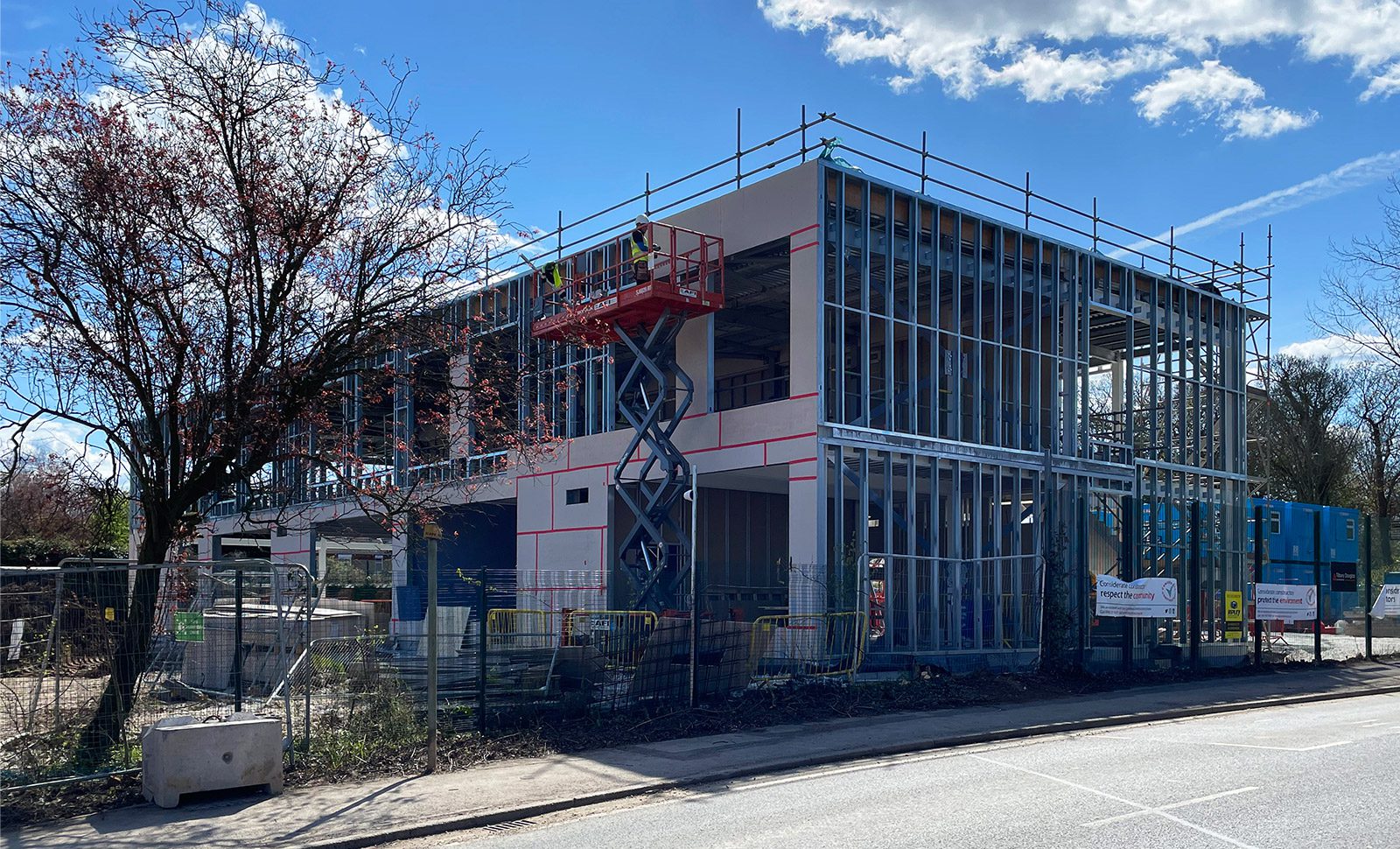School Acoustic Design
Our team of qualified acoustic consultants offers comprehensive assessments and tailored solutions throughout all stages of school construction and renovation projects, from feasibility studies to final commissioning. We help educational facilities meet Building Bulletin 93 (BB93) requirements, achieve BREEAM credits, and create spaces where students can concentrate and hear their teachers.
Why is good acoustic design in schools important?
Proper acoustic design in a school is perhaps something that will only be noticed when it is poorly done. A typical school day consists of several hours of a teacher conveying new and often challenging information to pupils, often with less-than-ideal concentration levels.
Unexpected distractions from outside, adjacent rooms, or poor room acoustics only make it more difficult to convey information effectively. Good acoustic design means pupils can concentrate and hear the teacher’s voice clearly with little distractions from external noise intrusion.
What are the minimum requirements for acoustics in school buildings?
Acoustic assessments for schools almost always ultimately consider the criteria set out in Building Bulletin 93, ‘Acoustic design of schools—performance standards’ [BB93]. This is a UK Government document issued by the Department for Education [DfE] and the Education Funding Agency [EfA]. The document sets out minimum performance standards that certain building elements must achieve.
The main considerations for school acoustics can be summarised as follows:
- Sound insulation of separating elements between adjacent rooms
- To ensure noise from one classroom does not affect the classroom next door.
- Suitable internal ambient noise levels
- To ensure noise from outside (e.g. road traffic, railways, etc) and noise from building services (e.g. mechanical ventilation) do not cause a distraction.
- Suitable design of absorption and room layouts
- To ensure rooms are not too reverberant (or ‘echoey’) and spoken information can be heard clearly.

When is an acoustic assessment required?
An acoustic assessment is advisable for all new-build and renovation projects. This ensures that the completed classrooms are suitable for use and provide effective learning environments.
A formal assessment may be a requirement under the following circumstances:
- Under Section E4 of Approved Document E of the Building Regulations
- This applies to primary schools (and nursery uses associated with primary schools), secondary schools (and associated sixth–form colleges) and independent sixth–form colleges established as schools.
- To achieve credits according to BREEAM
- New-build, non-domestic developments are awarded credits dependent on meeting certain relevant criteria. For schools, the criteria relate to Building Bulletin 93 [BB93]. Up to 3 credits are achieved under ‘Health and Wellbeing [Hea] 05’, and a further credit can be achieved under ‘Pollution [Pol] 05’, which is is related to noise emissions from plant installations.
- Employer’s Requirements
- Depending on how a contract for work is drawn up, the ‘Employer’ (usually the school’s end user) may stipulate certain requirements, such as that the requirements of Building Bulletin 93 [BB93] must be demonstrated to be met prior to handover.
Click here for more information about the acoustic design of schools.
What special considerations are there?
Generally, an acoustic assessment of a school building will focus on the design of separating walls and floors, selecting appropriate glazing and ventilation systems, and specifying suitable absorption materials.
However, site zoning can be equally important, provided acoustics is incorporated into a project suitably early on. For example, certain high-noise uses (e.g.,-noise uses (e.g., music rooms, sports halls) need to be carefully considered regarding their impact on nearby teaching spaces.
Equally, particularly sensitive rooms (e.g. rooms designed for students with Special Educational Needs (SEN) or quiet study areas) may be more affected by noise from nearby internal or external sources.

What are the stages of an acoustic assessment?
A good acoustic assessment by qualified noise consultants can provide useful information throughout the project. Therefore, it ensures that a project runs efficiently and provides a final development suitable for its intended use. An idea of the main stages are as follows:
- Feasibility Stage
-
Undertaking noise surveys on the proposed site. This will, therefore, establish if noise levels due to the existing surroundings are suitable for a school development.
-
- Early Design Stage
-
Outline reviews to inform the design team about what acoustic requirements need to be incorporated into the high-level design, such as sound insulation requirements between rooms and what acoustic requirements need to be incorporated into the high-level design, such as sound insulation requirements between rooms and control of external noise.
-
- Detailed Design Stage
-
Undertaking a detailed review of proposed construction drawings to ensure the proposals are expected to achieve the stated project requirements.
-
- Construction Stage
-
Answering questions as they arise on site and undertaking site visits to ensure the designs are correctly implemented.
-
- Completion Stage
-
The acoustic commissioning stage demonstrates that the completed development has met the design targets.
-
Why Choose Clement Acoustics?
Quick turnaround time
Helpful team of qualified acoustic engineers
Competitive rates
